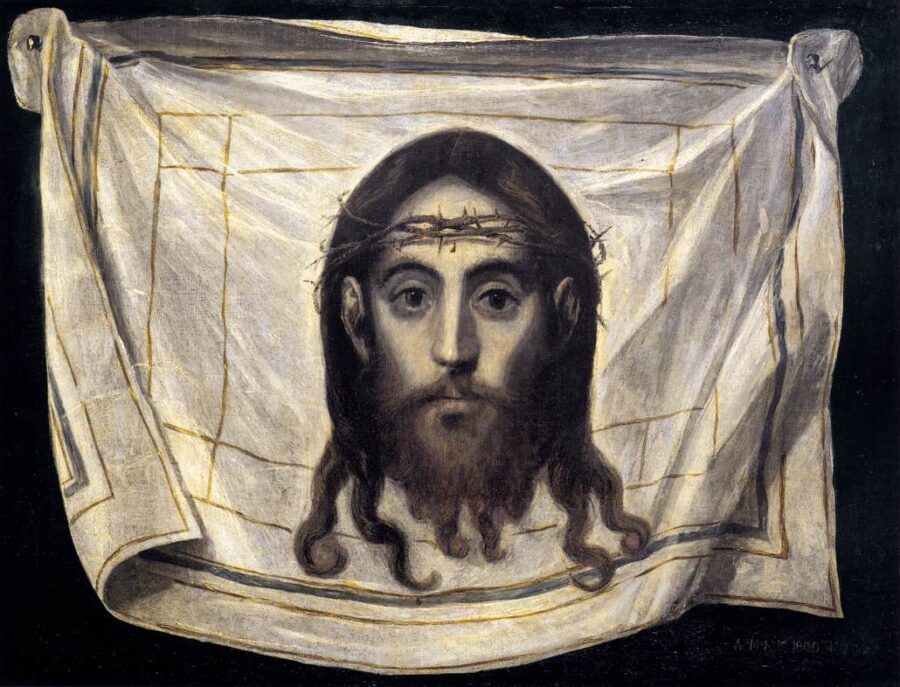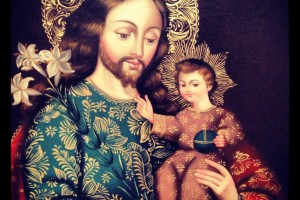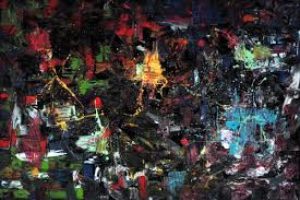St. John of Damascus penned the Treatises on the Divine Images in response to iconoclasm which swept across the Byzantine Empire under Emperor Leo III. Throughout his three treatise, St. John of Damascus works to distinguish veneration from worship, and he justifies icons imaging Jesus and the saints. As a modern reader the distinction between veneration (characterized as honor) and worship appeared— at least by verbal distinctions— quite clear, and I’ve never really taken issue with artists crafting paintings or sculptures of the saints. What really interested me was John’s defense of images of the Incarnate God.
One of the theories concerning the rise of iconoclasm in the 8th century was the decreasing strength of the Byzantine Empire in the wake of Islam’s growth. The changing power dynamics were, at the time, attributed to some spiritual failure of the Empire. While Islamic art refused to use images in worship and devotional practices (favoring instead intricate and ornate patterns), the walls of Byzantine churches were highly decorated with images of Jesus, the Virgin, and hosts of saints. Furthermore, Scriptural evidence against icon making acted as a principle energy in the argument against images.
“You shall have no other gods before me. You shall not make for yourself a carved image, or any likeness of anything that is in heaven above, or that is on the earth beneath, or that is in the water under the earth. You shall not bow down to them or serve them; for I the LORD your God am a jealous God, visiting the iniquity of the fathers on the children to the third and fourth generation of those who hate me, but showing steadfast love to thousands of those who love me and keep my commandments.” (Deut. 5:6-7, ESV)
Pretty straightforward, right?
But John of Damascus has a few things to add:
- God did not forbid images altogether. In the construction of the tabernacle, God’s instructions include visual representations, even of spiritual figures such as the two cherubim that flank the ark of the covenant. It seems, then, that God’s commandment is to guard his people against the deceit of idols, an image or object in which divinity is believed to be contained. John of Damascus writes, “You see, how it was on account of idolatry that he prohibited the fashioning of images, and that it is impossible to depict God who is incommensurable and circumscribable and invisible.” (I.7)
- God, invisible and incomprehensible, has been made visible in the Incarnation of the Son of God. For “when the invisible becomes visible in the flesh, then you may depict the likeness of something seen; when one who, by transcending his own nature, is bodiless, formless, incommensurable, without magnitude or size, that is, one who is in the form of God, taking the form of a slave, by this reduction to quantity and magnitude puts on the characteristics of a body, then depict him on a board and set up to view the One who has accepted to be seen.” (I.8)
But what use are images anyway? For what purpose is John of Damascus so intent on defending them? He answers: “since I am a human being and wear a body, I love to have communion in a bodily way with what is holy and to see it.” (I.36) For John of Damascus, memorializing an image of Jesus is a means of meditating upon the love of God manifest in the Incarnation which uniquely includes our bodies.
The closest my church upbringing ever got to art in devotional contexts was the classic flannelgraph. And yet, even without having ever considered the role of images or icons in Christian practices, I find myself as an adult surprised by my sensitivity surrounding sacred images. Images, like photographs of beloved friends or family I have in my living room, have a way of uniquely imitating presence.
When my husband and I first began attending an Anglican church, we were initially caught off guard when people gently bowed as the crucifix processed past us. Neither of us had really seen a crucifix used in worship and the carved figure made us pause. The visual demanded a different kind of attention from us. It wasn’t something I felt could be mentally glossed, perhaps because it was unfamiliar to me. The figurine upon the cross is a representation of Christ, not Christ Himself. I know that. Yet, there is something significant, something I’m still working to put my finger on, when we see with our own eyes holiness inscribed in matter. One thing I do know: While I may only behold representations made with human hands in this life, I will someday see the perfect image of the invisible God in His glorified Son.
St. John of Damascus, and Andrew Louth. Three Treatises on the Divine Images. Crestwood, NY: St. Vladimir’s Seminary Press, 2003.





1 Comment
Leave your reply.